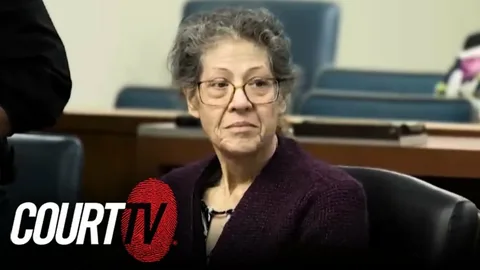Introduction
The name Susan Lorincz became widely known in the United States following a tragic incident that sparked national outrage and renewed discussions about race, justice, and community safety. Her case gained attention not only because of the events that took place but also due to the deeper social issues it brought to light. The confrontation that led to the death of Ajike “AJ” Owens in Florida left many people questioning how fear, prejudice, and misunderstanding continue to shape interactions between neighbors and communities across America.
Background of the Case
Susan Lorincz, a resident of Ocala, Florida, lived in a quiet neighborhood where tensions reportedly built up over time between her and some of her neighbors. The situation escalated in June 2023 when Lorincz shot and killed Ajike Owens, a 35-year-old Black mother of four, through her front door. According to reports, the confrontation arose from disputes involving Owens’ children, who were playing outside near Lorincz’s home.
The tragic event immediately drew widespread attention because it highlighted ongoing issues of racial tension and gun violence in the United States. Community members, activists, and political leaders called for justice, arguing that the shooting reflected deeper problems in the way individuals respond to fear, conflict, and bias.
The Incident and Investigation
On the day of the incident, Owens reportedly went to Lorincz’s home to address an earlier confrontation involving her children. According to police accounts, Lorincz fired a gun through her closed front door, striking Owens, who later died from her injuries.
Initially, questions arose about whether Lorincz would face criminal charges under Florida’s “stand your ground” law, which allows individuals to use deadly force if they believe they are in danger. However, after further investigation, Lorincz was charged with manslaughter with a firearm, culpable negligence, and assault.
Authorities stated that evidence did not support Lorincz’s claim of self-defense. Witnesses described a pattern of harassment and hostility leading up to the shooting, painting a picture of a neighborhood conflict that could have been prevented through dialogue and understanding.
Public Reaction and Social Impact
The killing of Ajike Owens reignited national conversations about race and justice of America. Civil rights groups and community activists organized rallies and vigils, demanding accountability and reforms. Many viewed the case as another example of how racial prejudice and gun culture intersect in tragic ways.
The public reaction was intense and emotional. Owens’ family, supported by local organizations, called for justice and highlighted the human cost of such violence. They emphasized that Owens was a devoted mother who died trying to protect her children, while Lorincz’s actions represented a failure to resolve conflicts peacefully.
The case also drew attention from political leaders who stressed the importance of reviewing self-defense laws and promoting stronger measures to prevent gun-related tragedies.
Legal Proceedings and Developments
As the case progressed, prosecutors worked to demonstrate that Lorincz’s actions were not justified under self-defense laws. The legal arguments centered on whether Lorincz’s fear was reasonable and whether her decision to shoot through a closed door was lawful.
Defense attorneys maintained that she believed she was in danger, but prosecutors emphasized that there was no immediate threat to her life. The evidence, including witness statements and surveillance footage, suggested that the shooting was an unnecessary and reckless act.
The court proceedings captured national attention, as the outcome could set precedents for future self-defense cases in the state of Florida and beyond.
A Reflection on Race and Fear
Beyond the legal aspects, the Susan Lorincz case forced many Americans to confront uncomfortable truths about race and fear in everyday life. Studies have long shown that perceptions of threat are often influenced by racial bias, sometimes leading to tragic outcomes when fear overrides reason.
The incident highlighted the importance of empathy and understanding within diverse communities. It demonstrated how unresolved tension and prejudice can escalate into violence, emphasizing the need for better communication, education, and neighborhood relations.
Community leaders and social organizations used the tragedy as a starting point to discuss how to build safer environments where disagreements do not lead to deadly consequences. Programs that promote conflict resolution and cultural awareness became more relevant in the aftermath of the incident.
Media Coverage and Public Awareness
The media played a crucial role in bringing national attention to the story. News outlets covered every stage of the investigation and trial, ensuring that the public remained aware of the details. However, the case also raised questions about the media’s influence on public opinion and how stories involving race and violence are presented.
Some argued that media narratives can sometimes fuel division by emphasizing racial differences rather than the human tragedy involved. Others believed that coverage was essential to highlight systemic issues that need change. Regardless, the media attention ensured that the case would not be forgotten or overlooked.
Lessons from the Tragedy
The case of Susan Lorincz serves as a stark reminder of the consequences of fear, anger, and prejudice. It underscores how quickly an argument or misunderstanding can turn into a tragedy when weapons and emotions are involved. The incident also highlights the importance of empathy, tolerance, and peaceful communication in diverse communities.
Preventing future incidents like this requires a collective effort from individuals, law enforcement, educators, and policymakers. Building trust among neighbors, addressing implicit biases, and ensuring fair enforcement of laws are essential steps toward safer communities.
Conclusion
The story of Susan Lorincz and Ajike Owens is more than a legal case—it is a reflection of the ongoing struggles America faces in addressing race, violence, and justice. While the courts will ultimately determine Lorincz’s legal fate, society must learn from this tragedy to prevent similar events in the future. The case reminds us that behind every headline is a story of human lives, emotions, and consequences. True progress can only come when communities replace fear with understanding and division with unity.











Comments are closed